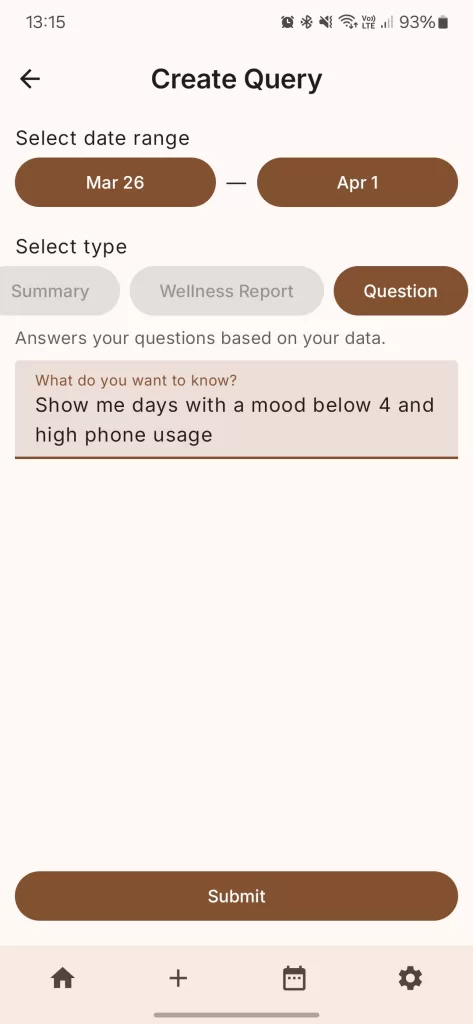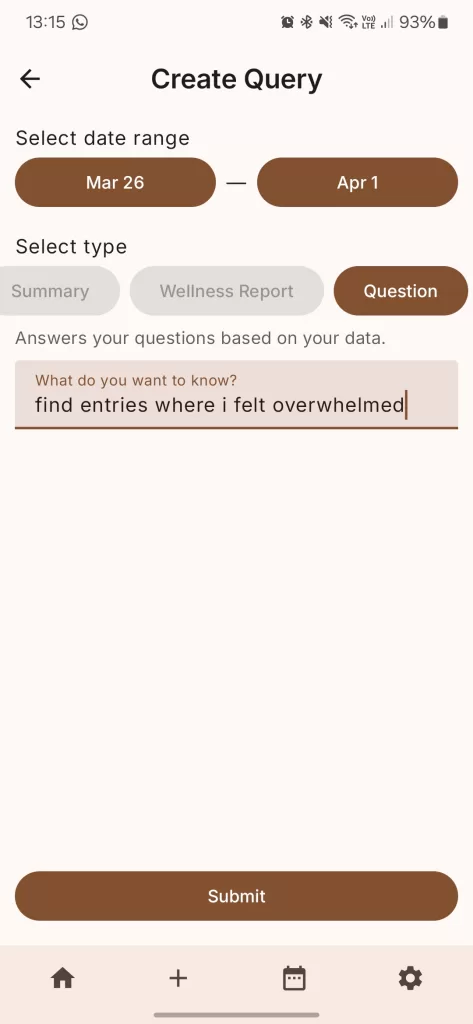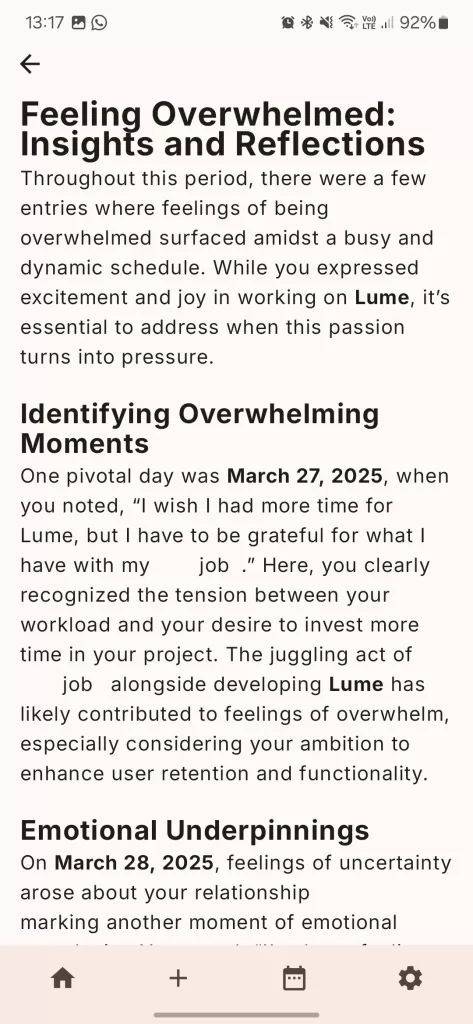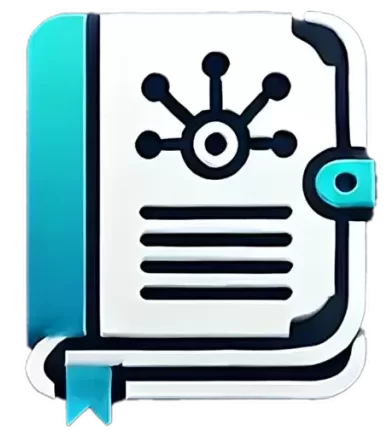How to Analyze Mood Patterns Using Your Journal (And What You’ll Learn)
Whether you journal daily or only when inspiration strikes, your entries hold a hidden story: the rhythms of your mood, the triggers behind your stress, and the habits that quietly shape your days.
In this post, we’ll show you how to analyze these patterns and turn your journal into a personal mood tracker—with the help of thoughtful queries and reflection.
Why Analyzing Mood Patterns Matter
Analyzing your mood over time helps you answer big questions like:
- Why do I feel off on Sundays?
- What habits lead to better days for me?
- Is there a link between phone usage and low moods?
Recognizing these trends gives you clarity—and that clarity helps you take action.
Start With Mood-Focused Journaling
Before you can analyze patterns, make sure you’re capturing your mood consistently. Here’s how:
- Log your mood each time you journal: Use a mood scale (e.g., 1–10) or descriptive terms like “calm,” “anxious,” or “energized.”
- Include context: Write about what happened before the mood. Where were you? What were you doing?
- Use emojis or symbols: They’re easy to scan later and make journaling feel lighter.
Using Queries to Reveal Emotional Patterns
Once you’ve built a few weeks of entries, you can start asking questions—queries—to uncover patterns. Think of queries as filters that help you slice through your journal to find insights.
Tools like Lume’s Journal Query feature make it easy to explore this data without having to reread every entry.
“Show me days with a mood below 4 and high phone usage.”
This kind of query helps you identify low-energy days that might be tied to screen time. You might discover that doomscrolling at night leaves you feeling drained the next morning—or that long social media sessions tend to correlate with lower moods.
Try comparing this across different weeks to see if the trend holds.
 |  |
“Find entries where I felt overwhelmed.”
Work or school stress can easily sneak into your emotional baseline. By filtering for the keyword “overwhelmed” during weekdays, you can pinpoint patterns—like specific meetings, projects, or habits that trigger stress.
Knowing when and why these moments occur lets you prepare or adjust your schedule.
 |  |
“Compare moods on workout days vs. sedentary days.”
This is a great way to see the mental impact of physical activity. Even if you’re not a regular gym-goer, tracking whether you took a walk, stretched, or had a movement break can provide clear insights.
If your average mood score jumps on active days, you’ve got a strong case for prioritizing movement—even in small ways.
“Group moods by week to spot trends.”
Looking at individual days is helpful, but sometimes zooming out gives a clearer picture. Grouping your entries weekly allows you to identify whether you’re trending up or down, emotionally.
You might notice that a low week lines up with less sleep, bad weather, or increased phone usage—revealing hidden influences on your wellbeing.
What You Can Learn From Mood Analysis
With regular analysis, you can discover:
- Emotional Triggers – recurring events or people that lead to certain feelings.
- Recovery Patterns – how long it typically takes for your mood to bounce back.
- Peak Energy Windows – times of day or week when you feel best.
- Wellness Correlations – links between exercise, sleep, or screen time and your emotional state.
Build a Habit of Weekly Mood Reviews
To get the most from your journal, block 10 minutes each Sunday to:
- Review your mood log
- Ask a few key queries
- Write a short summary or insight (“I feel better when I unplug before bed.”)
This keeps you grounded—and gives you real feedback on how you’re doing.
Ready to Explore Your Mood Patterns?
With just a few questions, your journal transforms from a place of thoughts to a tool for emotional insight.
Start by tracking, then querying, then reflecting.





